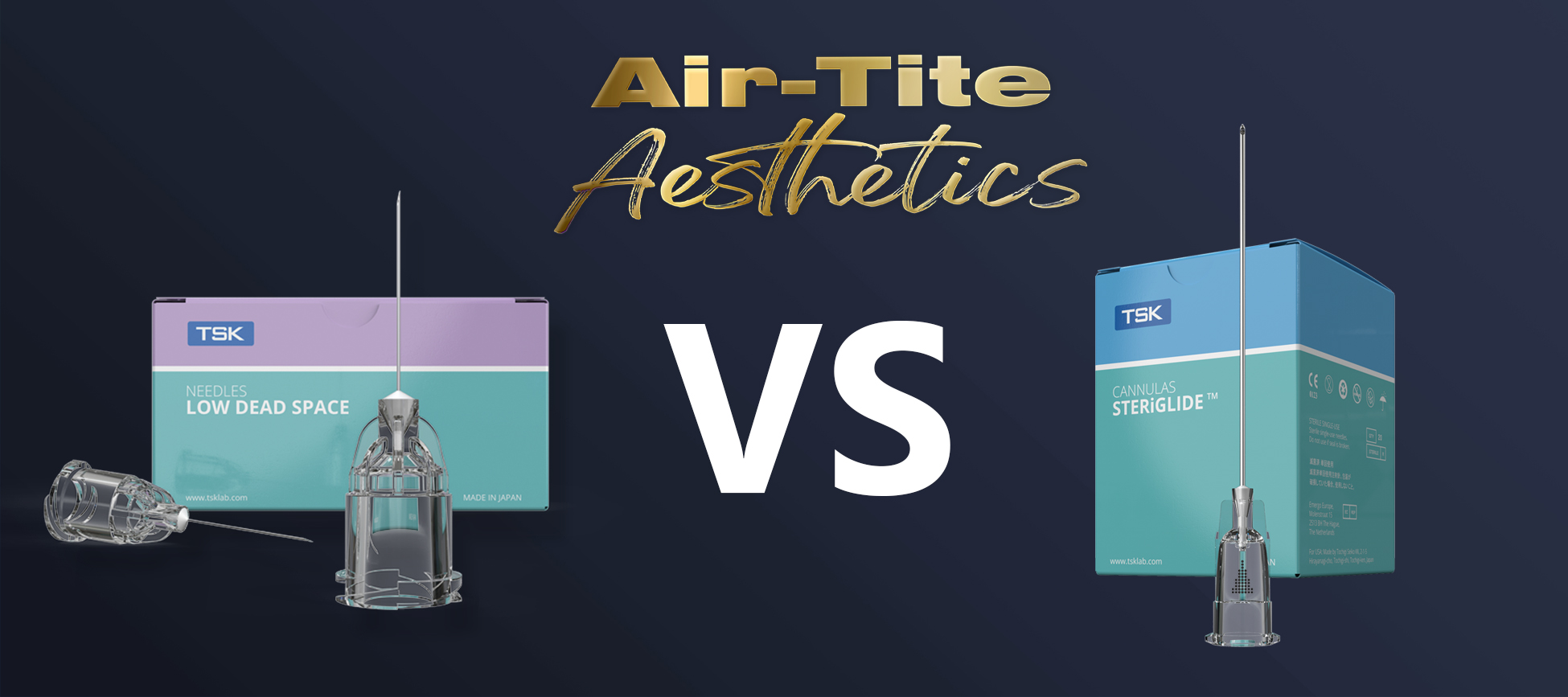
FDA-approved facial fillers have been around since the early 1980s. Right from the start, traditional needles were the gold standard in filler delivery—that is until 2012 when the FDA approved the usage of microcannulas for use with soft tissue fillers.
Ever since, a debate has raged on as to which delivery method is superior for injecting fillers. Some practitioners prefer a traditional needle, while others see the benefits of using cannulas.
Recently, Dr. Gideon Kwok and Lori Robertson, MSN, FNP-C, from The Aesthetic Immersion, sat down to discuss blunt-tipped cannulas, needles, and which one they felt was better for dermal filler injections.
Read on to learn more as these two industry experts weigh in and share their opinions.
Although they are a bit tougher to aspirate, Dr. Kwok prefers to use longer needles as he is able to come in at more angles. Considering how rigid needles are, he believes they provide more accuracy and precision due to the product coming straight out of the bevel and because the practitioner can inject at an angle (rather than perpendicular) with no product backflow.
Safety is always a main concern when it comes to injections. Both Dr. Kwok and Lori Robertson feel that needles might be safer for usage in certain areas, such as the:
They also both agree that selecting the “right” needle is very important when injecting, as the needles need to be extremely sharp for maximum patient comfort. Dr. Kwok prefers to use the TSK Low-Dead Space Needles since they not only are super-sharp but can add up to significant savings.
Dr. Kwok feels that a traditional needle wastes around five units per syringe, depending on how you reconstitute your dermal fillers. That translates to a potential $500 savings for every box of low-dead space needles you use, according to Lori’s calculations.
However, needles do have a few disadvantages. For example, when first injecting, most people do not have a lot of finesse, which typically leads to lots of painful pokes. The fact that needles require numerous injection points can cause bruising, bleeding, and discomfort in some patients, especially in more novice hands. For this reason, many practitioners turn to a cannula for injecting dermal fillers.
Cannulas have a rounded, blunt tip and are somewhat flexible compared to a traditional needle - which is rigid and has a sharp pointed end. The dermal filler product comes out of the side of a cannula through a small port near the tip, rather than at the tip itself.
When performing dermal filler injections with a cannula, the injection site is typically numbed, and a sharp pilot needle is used to pierce the skin. The cannula is then inserted into the puncture hole created by the needle and is slid along the tissue planes to the delivery area. This allows the practitioner to make just one injection point and provides them access to a much larger area for filler placement.
Lori Robertson prefers to use cannulas for most of her dermal filler procedures. She feels that she can more precisely feel if she’s about to hit a ligament or vessel with a cannula. This provides greater control and allows her to gently back off and go around certain no-go areas.
She also likes that she only needs one injection point with a cannula versus having to make multiple injection points with a traditional needle. In addition to improved patient comfort, using a cannula provides less risk of bleeding and bruising.
As with needles, both Lori Robertson and Dr. Kwok agree that selecting the “right” cannula is important. They both prefer using TSK STERiGLIDE Aesthetic Microcannulas, as they are more stiff/firm than others on the market (aiding in breaking up tissue in subcisional areas and providing more accurate placement) and have a port extremely close to the tip. In Lori’s words, STERiGLIDE cannulas “Glide like butter” through the anatomy and do not catch.
One drawback of using cannulas is that patients are typically more prepared mentally for needle injections, so a patient unfamiliar with what a cannula is may be more fearful and anxious.
Both needles and cannulas require careful attention when used, as they can potentially be harmful and dangerous to patients if you are rough. The injector needs to be respectful of tissue, vessels, ligaments, etc. wherever they go with either choice. The key to achieving safe, desirable results is fully understanding the usages of these tools.
While Dr. Kwok typically prefers to use needles and Lori Robertson prefers cannulas, the choice between the two boils down to practitioner preference. Both methods can provide excellent results when used correctly, and each one has its place in safely and effectively delivering dermal fillers.
At Air-Tite, we carry a wide selection of both needles and cannulas for dermal fillers and other non-invasive procedures. Click below to see which products are right for your practice.
Most product options are available through a wide range of national distribution partners. Please contact us for cross-reference information.